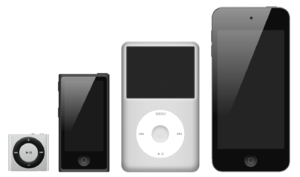Apple released the newest version of what they call "the most advanced operating system on the planet" on Wednesday, as expected, at 8:30 in the morning. It is the first operating system (by Apple) to be distributed solely by online digital means at launch and is highly encouraged to be installed without any use of optical discs, USB drives, etc. Supposedly, Apple will sell copies of OS X Lion in the coming months in their retail stores for $69 on a USB stick.
While $69 is still cheaper than your typical install of Windows, it is basically what you pay $29 on the Mac App Store on a USB drive. The USB drive would only need to be about 4GB in size (and you can buy these as low as $8 on Amazon) so a $30ish markup sends the customer one clear message from Apple: download this, don't buy a physical copy. When they released the Mac App Store not long ago they dropped the price of their photo editing software, Aperture, from $200 to $80. The price didn't drop on the copy with physical discs. If you went into an Apple store and bought Aperture you would pay $199. If you wised up, went home, and downloaded it online through the Mac App Store, you could install it on any machine you own as many times as you'd like for no more than $79. Apple is getting rid of optical media(DVDs) in a large way and is more or less pushing their customers into the future...like it or not.
This is all well and good, but if the download and install for Lion went horribly wrong (think MobileMe), Apple would have to answer for this seemingly hasty decision.
But it didn't.
It installed perfectly, without a single hitch, on both of our machines and seems to be running well. The rest of Apple customers seem to be saying the same thing. More than a million people downloaded Lion on day one and everything everyone has said has been more than positive about the download and install process.
I have had limited experience with it thus far as we have been traveling, but I really do like it. And to be able to install it on as many machines as you own for $29 is more than a good deal, it is a steal. To not upgrade to Lion seems absurd, unless $30 is really a huge strain on your wallet. If you through down the >$1000 on the computer to begin with, chances are that you can afford the $30 upgrade. If you're even considering it, and don't have a legitimate reason not to (some of the old PowerPC apps will not run anymore in Lion), it seems very dumb not to do it. You don't have to got to the store to buy a disc, you don't have to have it shipped. You simply pay $30 through your iTunes account and download. Within an hour and a half, you've got the brand new operating system.
Many, many things have changed in Lion. Almost 100% of these changes are easily seen as good, from the user's perspective, right from the start.
One, though, has been getting some backlash.
For years, you've been able to scroll on the Mac using either a scroll wheel on a non-Apple branded mouse, the Apple Magic Mouse, the Apple Magic Trackpad, or the trackpad on your laptop.
I assume that scrolling really evolved from the directional arrows that have sat on the side of our browsers and windows since the beginning. If more content went past what was currently visible on the screen, you clicked on the down arrow to move the page downward. You could also click on the scroll bar and move it toward the bottom.
Scrolling, without having to interact with the side scroll bar, developed from this idea. The most common way on a Mac has been with two-finger swipes on the trackpad. If you want to go down on the page, you swipe with two fingers downward. It makes sense, right? Not anymore.
One of the things Apple is starting to do with Mac OS X Lion is to bring some of the quality designs and decisions they made with iOS back to the Mac. One of the most immediately evident is...scrolling.
On an iPad, iPhone, or iPod touch, when a user wants to scroll through a web page (and much of what users do on these devices is completely through the browser), they take their finger (on an iOS device it is just one finger) and "push" the content on the screen around. This process is actually exactly opposite of the Mac's directions, but gives the user the sensation that they are physically manipulating the content on the page with their hands. Apple really debuted this concept with the outset of the iPhone with "pinch to zoom" multitouch but didn't speak at all about how scrolling worked on the iPhone. It just made sense.
The decision seems easy. The layer of abstraction is gone when a mouse and keyboard are gone, so why create another layer? The user knows there is more content they wish to view. So, like in the real world, they physically move the content in front of them, out of the way. You never have to explain to the four year old manipulating your iPad how to scroll a page, they just do it. Because it feels natural.
So on Mac OS Lion, Apple decided to reverse the scrolling. They decided to call this new scrolling "natural" because it feels more "natural". You can tell there was some internal conflict at Apple about this because the VERY first thing you see when you start up Lion is a welcome box that explains how scrolling works in Lion. They are very conscious that this is going to be very different and very frustrating at first to seasoned users. And, if you're reading this and thinking that this isn't good at all and is the sole reason not to update, have no fear, this can easily be changed by unchecking one box in System Preferences (another example of why, perhaps, everyone at Apple was not in total agreement).
The idea is simple. If we are going to interact with the content on our computer in the same way we interact with the information in physical form in our lives, the way we interact with it needs to feel more natural.
Which brings me to my plea: don't uncheck that box. Give yourself some time. Allow your brain to relearn how to interact with everything. Because, in general, this too is a good change. We want to feel as if we are directly manipulating content on a screen. And, in order to do that, we need to get rid of the layers of abstraction that have existed because we couldn't think of a better way when we all began.
Here's where I think Apple went wrong though: Why even refer to it as scrolling? When Phil Schiller introduced it, he described it as "pushing the content" but he stilled called it "scrolling". They shouldn't have stuck with that name. "Pushing" is much, much better. Instead of a welcome screen titled "Scrolling in Lion" it should have read "Pushing in Lion". Because really, we aren't scrolling anymore. We are manipulating. And when we need to move from top to bottom, scrolling seems silly, we are pushing. In that sense, it wouldn't appear as if Apple simply reversed the way it used to work, they just came up with a new plan, a new concept, a new paradigm of thinking. Imagine Apple saying, "scrolling is out. We don't need it anymore. Now, we just push. So from now on, we call it 'Pushing'. Welcome to the new "Pushing" in Lion, it is more natural, revolutionary, and...magical." It would have brought the house down.
Give it a shot. Don't uncheck that box. It took me only a couple of hours to get used to it. It was very, very strange at first, but as we move more into the world of touch screens and manipulated content, "pushing" is the future, not scrolling.
Apple has always been a company to make big sweeping decisions and force customers into the future. They put the computer in one box and gave it a mouse and new user interface (but what about our command lines?). They took the floppy out of the iMac (how absurd!). They took the CD out of music (it's a shame that didn't work out). They took the keyboard off a smart phone (that's been totally unpopular and never was copied). They took the keyboard off of the tablet(gosh, if only 28.6 million of those hadn't been sold). They ended scrolling on a screen (if only they had marketed it that way). In every instance, it has been met with much positive approval and has led to a complete paradigm shift of thinking in the computer industry.
Stick with it. It'll get better.
-B


